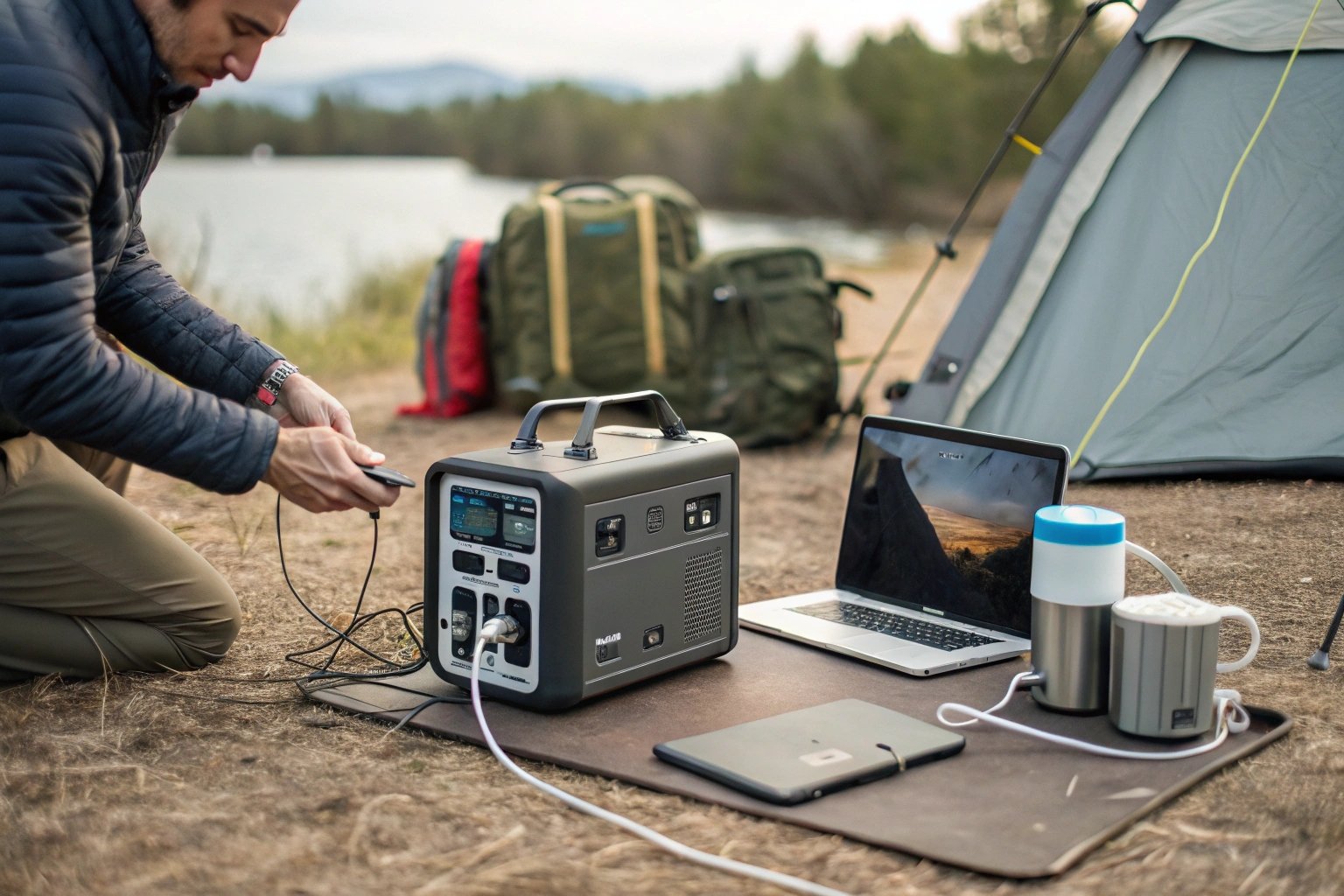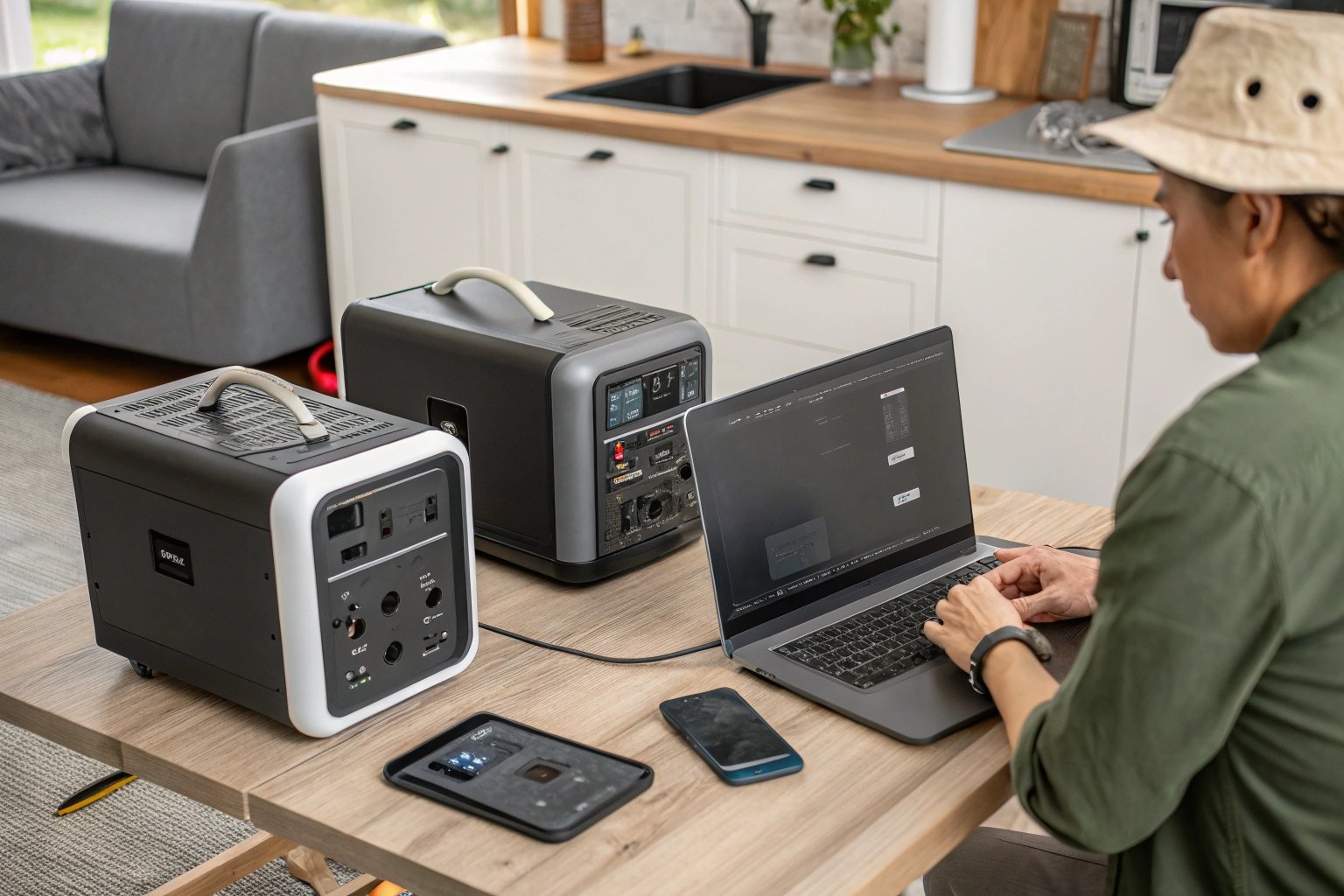Struggling with power outages or off-grid living? A portable power station might be exactly what you need—but only if you know how to choose and use one correctly.
A portable power station is a rechargeable battery generator that supplies energy for electronics and appliances when traditional power sources are unavailable.
I didn’t think I needed a portable power station until a sudden blackout left my family in the dark for hours. No light, no phone charging, no heating pad. That’s when I realized power is not a luxury—it’s survival. Whether you're preparing for emergencies, camping, or living off-grid, this guide breaks it all down.
What to look for in a portable power station?
Overwhelmed by too many models and specs? Choosing the wrong one can leave you powerless when it matters most.
To choose a portable power station, compare battery capacity, port options, weight, charging methods, and battery type like lithium-ion or LiFePO4.
what to look for in a power station
Breaking it down
When customers ask me what to buy, I tell them to start with power needs. Think in watt-hours (Wh). Add up the wattage of devices you'll run and how many hours you need them. Multiply to get the battery capacity you should look for.
| Feature | Description |
|---|---|
| Capacity (Wh) | Total energy the battery can store |
| Output Ports | AC, USB-A, USB-C, DC ports, car outlets |
| Battery Type | Li-ion (lighter), LiFePO4 (longer life) |
| Weight & Portability | Important for camping or mobile setups |
| Charging Methods | AC wall, car port, solar panel compatible |
I always recommend LiFePO4 if budget allows—it’s safer and lasts longer. If you're camping or traveling, lightweight is key. For home backup, go big.
How to operate a portable power station?
Think using it is hard? Not at all. But there are steps to follow.
To use a portable power station, charge it fully, connect your devices to the output ports, and turn it on using the control panel.
how to use portable power station
Easy steps for safe use
Operating these stations is simple, but people often miss small things that cause trouble. First, charge it completely. This could take 4 to 12 hours depending on capacity and power source. Then, plug in your devices—starting with lower wattage ones—and monitor the display for output and remaining battery.
| Step | Action |
|---|---|
| 1. Charge it | Use wall, solar, or car charging until 100% |
| 2. Plug in | Connect devices to the appropriate port type |
| 3. Monitor load | Ensure you’re not exceeding rated wattage |
| 4. Recharge | Before it drops to 0% to extend battery life |
I’ve seen someone fry a laptop by plugging it into a 12V DC port instead of the AC outlet. Know your ports. Follow instructions. And always check the load before connecting heavy appliances.
What are the disadvantages of a portable power station?
Is it perfect? Not quite. Let’s talk trade-offs.
The main disadvantages are limited capacity, slow recharging, high price for high-end models, and weight for larger units.
portable power station downsides
Know what you’re giving up
Every tech has limits. Power stations aren’t as powerful as gas generators. They can’t run a whole house or big appliances for long. And even fast-charging models may still need 6–8 hours to fully recharge.
| Disadvantage | Impact |
|---|---|
| Limited Capacity | Not suitable for heavy-duty or prolonged use |
| Charging Time | Solar charging can take a full sunny day |
| Weight | Large units are heavy and not easy to move |
| Upfront Cost | Higher than power banks or entry-level generators |
One of my customers bought a big one for camping, but complained about its 12kg weight. She hadn’t thought about carrying it uphill. Make sure to match your real-world use with what the unit can handle.
Can you leave a portable power station plugged in all the time?
Want it ready anytime? Be careful—overcharging can be a hidden problem.
Most stations can be left plugged in due to built-in Battery Management Systems, but long-term storage at 100% charge is not recommended.
Best practices for storage and longevity
Modern power stations include smart systems that stop charging once they hit 100%. Still, if you leave them fully charged and unused, battery health can suffer over time. I recommend cycling the battery once a month—use it down to 20–30%, then charge again.
| Practice | Why It Matters |
|---|---|
| Avoid 100% storage | Keeps battery from degrading prematurely |
| Monthly usage cycle | Helps maintain internal balance |
| Store in cool, dry place | Prevents heat damage or condensation |
| Use BMS-equipped units | Ensures smart protection from overcharging |
I store mine at about 60–70% and use a reminder to cycle it monthly. It’s helped extend the life of every unit I’ve owned.
Conclusion
Portable power stations are smart, flexible tools for power on the go or at home—just match the specs to your needs, use them right, and store them wisely.



